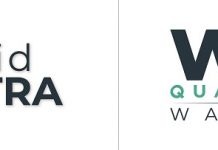The next phase-in deadline for REACH is May 2018. This might seem like a date looming off into the distant future, but experienced has shown that time passes swiftly in the world of regulatory compliance and there is a finite number of reputable service providers with a limit on capacity.
It might be essential to start sooner than you think to meet your REACH obligations and the continuation of your business opportunities.
At the start of the REACH process CEFIC 1 estimated some 30,000 individual phase-in substances would require registration by 2018, with an estimate of around 6,000 substances to be registered by the 2013 deadline. Following the 2013 registration deadline, ECHA2 released statistics which demonstrate that these estimates were remarkably accurate, with over 6500 phase-in substances having been registered since REACH entered force. ECHA’s figures also demonstrate an additional trend that was not necessarily foreseen; this being the concept of member registration. In fact for each substance that has been registered there was an average of 5 member submissions, under the OSOR3 principle of the regulation. Anecdotally, though, many of these substances have been registered using a significant amount of existing data and with a mixture of in-house and third party regulatory service providers.
On the basis of the original CEFIC estimates it is anticipated that over 20,000 chemical substances are likely to require registration by 2018. A portion of these substances might well fall off the market, due to companies not supporting a registration. Equally a portion of these substances may have fewer registrants, being smaller volume, probably with more specialised uses. A much greater proportion of these substances are, nevertheless, likely to have no existing data available leaving registrants with a requirement to fill data gaps. These gaps may be filled by new data from testing, by grouping and read across to other substances, by literature data or by QSAR4 , as appropriate.
All of these possibilities to complete the data gaps rely on there being adequate capacity with the testing and regulatory services industry to undertake and complete the requirements. Herein lies a very pertinent threat to a registrant’s ability to complete registration in time for the deadline, given that there might be as many as 20,000 substance registrants competing for the same services. There is an extremely high likelihood that demand will very quickly outstrip capacity for the support services. This also ignores the fact that many registrants will need to prepare and submit member registration dossiers for those substances that have already been registered.
There will be registrants for whom completing registration is imperative to the continuation of business. In such a case, missing the deadline and being forced to cease supply could be disastrous. Don’t be fooled either into thinking that someone else will take the lead to allow your company to simply submit a member dossier just prior to the deadline. There is no guarantee that someone else will have registered your substance(s), regardless of any stated intentions. There is even no guarantee that a reliable service provider will have the capacity to assist with completing your registration.
It is imperative that company’s start now to assess their REACH obligations, to determine their position in the supply chain, to assure themselves that they can hit the target and also spread the cost of compliance. Work up of detailed requirements and the prioritisation of tasks now might just be the essential steps to ensuring that you don’t miss the 2018 deadline. And remember – 2018 is a deadline not a timetable.











